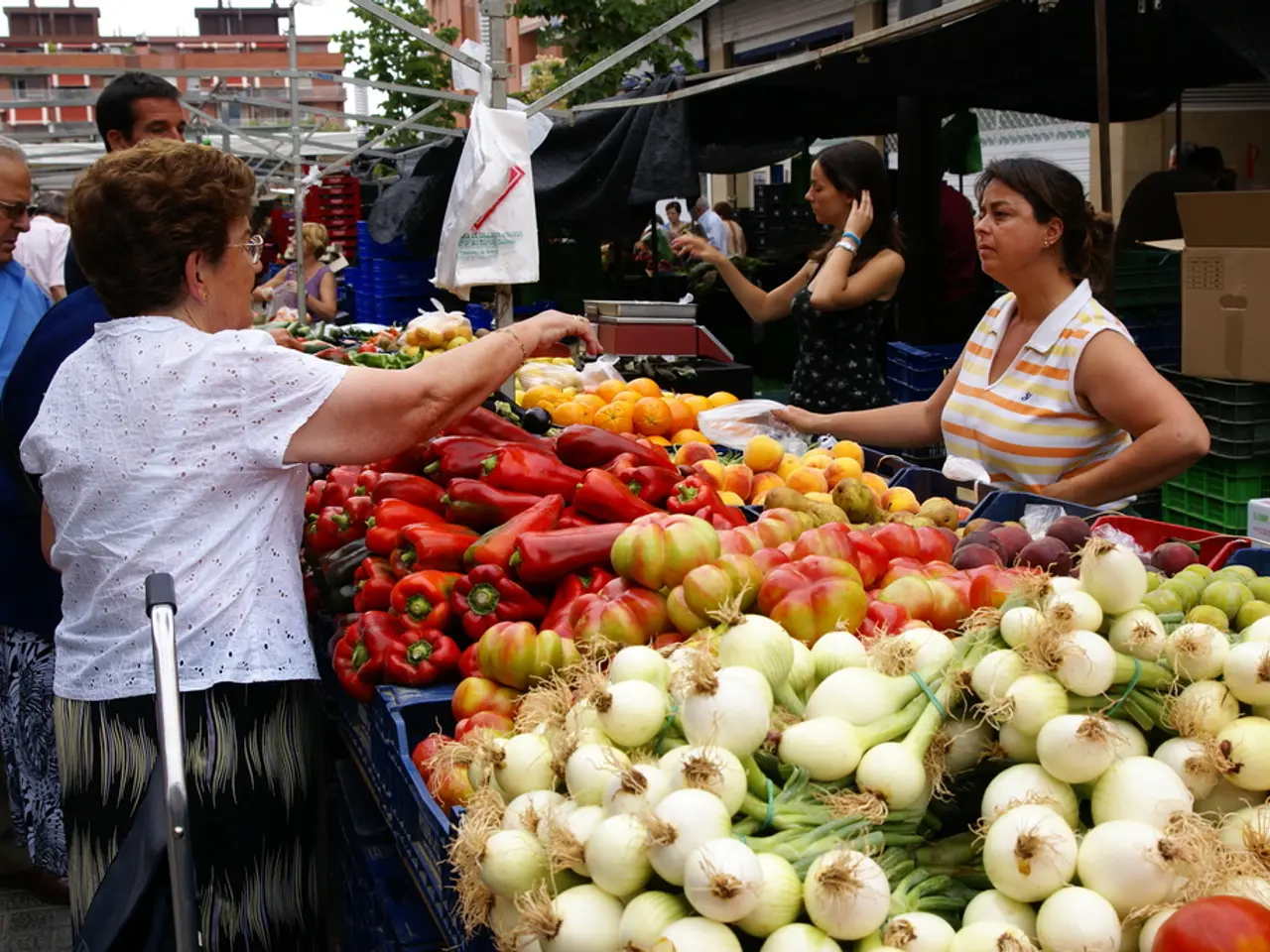A Comprehensive Overview on Container Planting for Inexperienced Gardeners
Starting a container vegetable garden can be an exciting venture, especially for those with limited space or poor soil quality. Here's a comprehensive guide to help you create a thriving container garden.
Choosing the Right Containers
Selecting the right containers is crucial. Opt for large containers, such as 5 gallons or more, to accommodate mature plant roots, especially for vegetables like tomatoes. Ensure your containers have drainage holes to prevent waterlogging. Unfortunately, many pots bought at local nurseries lack this essential feature.
Selecting the Right Soil
Avoid using garden soil for your container garden. Instead, use a well-draining potting mix enriched with compost or organic fertilizer to supply nutrients essential for confined root zones.
Preparing Containers for Water Management
Creating a beneficial drainage system is vital to prevent root rot. Prepare containers with a water reservoir, such as a saturated straw layer, or consider self-watering containers to maintain consistent moisture.
Choosing Suitable Vegetables
Select vegetables suited to container growing, such as tomatoes, peppers, lettuce, radishes, carrots, herbs, squash, and compact varieties designed for pots. Pay attention to planting depth, especially for deeper planting of tomatoes for stability.
Proper Spacing
Space plants properly to avoid overcrowding, which limits airflow and growth. Follow guidelines like one tomato per 5-gallon pot or 4–6 lettuce plants in a 12-inch pot.
Lighting and Placement
Place containers where they receive adequate sunlight, usually full sun for most vegetables, or partial shade for greens and herbs, and sheltered from harsh wind or extreme sun. Grouping pots can reduce exposure.
Watering and Fertilizing
Water thoroughly and consistently, watering deeply to promote strong roots and avoid both drying out and waterlogging. Fertilize regularly with balanced, slow-release or organic fertilizers since container soil can lose nutrients quickly.
Arranging for Easy Access
Arrange containers for easy access to care, including watering, fertilizing, pruning, and harvesting.
The Gardenuity container garden kit comes with a container tailored for plant growth, along with all the necessary materials and information for starting a container garden. Grow bags are a popular choice for container gardening because they can be transported indoors when the weather gets too cold.
Remember, overwatering is the most common cause of plant deaths in container gardens. The "thumb test" is a good rule of thumb when deciding when to water a container garden: stick your thumb into the top inch of the soil; if the soil is still moist, you do not need to water the plant.
Container gardening is beneficial for those living in apartments or small spaces without yards, as well as for those who want to experiment with new vegetables or herbs in a contained space. With careful planning and attention to detail, you can create a productive, manageable container vegetable garden.
[1] Gardenuity Container Garden Kit: https://www.gardenuity.com/products/container-garden-kits [2] Gardenuity Grow Bag: https://www.gardenuity.com/products/grow-bags [3] The Ultimate Guide to Container Gardening: https://www.gardenuity.com/blogs/container-gardening/the-ultimate-guide-to-container-gardening [4] How to Start a Container Garden: https://www.gardenuity.com/blogs/container-gardening/how-to-start-a-container-garden [5] Container Garden Fertilizer: https://www.gardenuity.com/blogs/container-gardening/container-garden-fertilizer
- To kickstart your gardening adventure, you might find the 'Gardenuity Container Garden Kit' helpful, as it includes a container and all the essential resources for starting your own container garden.
- Furnishing your living space with a home-and-garden touch could be as simple as adopting container gardening, which is suitable for apartment dwellers, those with limited space, or those who wish to cultivate new plants in a controlled setting.
- If you're embarking on the journey of 'gardening for beginners,' it's essential to remember the 'thumb test' when watering your container garden - insert your thumb into the top inch of the soil, and if it's still moist, refrain from watering the plant.




